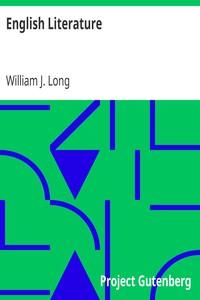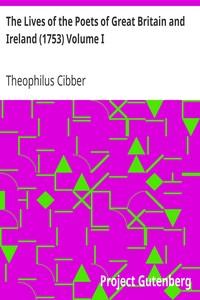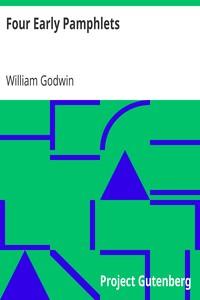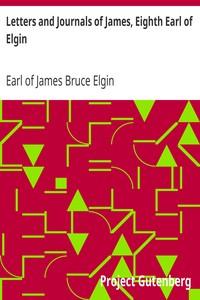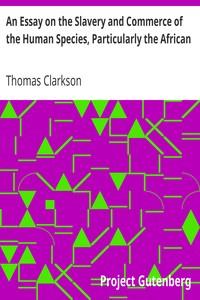|
|
Read this ebook for free! No credit card needed, absolutely nothing to pay.Words: 199013 in 39 pages
This is an ebook sharing website. You can read the uploaded ebooks for free here. No credit cards needed, nothing to pay. If you want to own a digital copy of the ebook, or want to read offline with your favorite ebook-reader, then you can choose to buy and download the ebook.

: English Literature Its History and Its Significance for the Life of the English-Speaking World by Long William J William Joseph - English literature History and criticism@FreeBooksTue 06 Jun, 2023 TO THE CANTERBURY TALES. In the famous "Prologue" the poet makes us acquainted with the various characters of his drama. Until Chaucer's day popular literature had been busy chiefly with the gods and heroes of a golden age; it had been essentially romantic, and so had never attempted to study men and women as they are, or to describe them so that the reader recognizes them, not as ideal heroes, but as his own neighbors. Chaucer not only attempted this new realistic task, but accomplished it so well that his characters were instantly recognized as true to life, and they have since become the permanent possession of our literature. Beowulf and Roland are ideal heroes, essentially creatures of the imagination; but the merry host of the Tabard Inn, Madame Eglantyne, the fat monk, the parish priest, the kindly plowman, the poor scholar with his "book?s black and red,"--all seem more like personal acquaintances than characters in a book. Says Dryden: "I see all the pilgrims, their humours, their features and their very dress, as distinctly as if I had supped with them at the Tabard in Southwark." Chaucer is the first English writer to bring the atmosphere of romantic interest about the men and women and the daily work of one's own world,--which is the aim of nearly all modern literature. The historian of our literature is tempted to linger over this "Prologue" and to quote from it passage after passage to show how keenly and yet kindly our first modern poet observed his fellow-men. The characters, too, attract one like a good play: the "verray parfit gentil knight" and his manly son, the modest prioress, model of sweet piety and society manners, the sporting monk and the fat friar, the discreet man of law, the well-fed country squire, the sailor just home from sea, the canny doctor, the lovable parish priest who taught true religion to his flock, but "first he folwed it himselve"; the coarse but good-hearted Wyf of Bath, the thieving miller leading the pilgrims to the music of his bagpipe,--all these and many others from every walk of English life, and all described with a quiet, kindly humor which seeks instinctively the best in human nature, and which has an ample garment of charity to cover even its faults and failings. "Here," indeed, as Dryden says, "is God's plenty." Probably no keener or kinder critic ever described his fellows; and in this immortal "Prologue" Chaucer is a model for all those who would put our human life into writing. The student should read it entire, as an introduction not only to the poet but to all our modern literature. Infinite been the sorwes and the teres Of old? folk, and folk of tendre yeres. The idea of the story was borrowed from Boccaccio; but parts of the original tale were much older and belonged to the common literary stock of the Middle Ages. Like Shakespeare, Chaucer took the material for his poems wherever he found it, and his originality consists in giving to an old story some present human interest, making it express the life and ideals of his own age. In this respect the "Knight's Tale" is remarkable. Its names are those of an ancient civilization, but its characters are men and women of the English nobility as Chaucer knew them. In consequence the story has many anachronisms, such as the mediaeval tournament before the temple of Mars; but the reader scarcely notices these things, being absorbed in the dramatic interest of the narrative. His eyen twinkled in his heed aright As doon the sterres in the frosty night. O blisful light, of whiche the bemes clere Adorneth al the thridde hevene faire! O sonnes leef, O Joves doughter dere, Plesaunce of love, O goodly debonaire, In gentil hertes ay redy to repaire! O verray cause of hele and of gladnesse, Y-heried be thy might and thy goodnesse! In hevene and helle, in erthe and salte see Is felt thy might, if that I wel descerne; As man, brid, best, fish, herbe and grene tree Thee fele in tymes with vapour eterne. God loveth, and to love wol nought werne; And in this world no lyves creature, With-outen love, is worth, or may endure. The third meter is the eight-syllable line with four accents, the lines riming in couplets, as in the "Boke of the Duchesse": Thereto she coude so wel pleye, Whan that hir liste, that I dar seye That she was lyk to torche bright, That every man may take-of light Ynough, and hit hath never the lesse. Besides these principal meters, Chaucer in his short poems used many other poetical forms modeled after the French, who in the fourteenth century were cunning workers in every form of verse. Chief among these are the difficult but exquisite rondel, "Now welcom Somer with thy sonne softe," which closes the "Parliament of Fowls," and the ballad, "Flee fro the prees," which has been already quoted. In the "Monk's Tale" there is a melodious measure which may have furnished the model for Spenser's famous stanza. Chaucer's poetry is extremely musical and must be judged by the ear rather than by the eye. To the modern reader the lines appear broken and uneven; but if one reads them over a few times, he soon catches the perfect swing of the measure, and finds that he is in the hands of a master whose ear is delicately sensitive to the smallest accent. There is a lilt in all his lines which is marvelous when we consider that he is the first to show us the poetic possibilities of the language. His claim upon our gratitude is twofold: first, for discovering the music that is in our English speech; and second, for his influence in fixing the Midland dialect as the literary language of England. CHAUCER'S CONTEMPORARIES WILLIAM LANGLAND Here are a few lines to illustrate the style and language; but the whole poem must be read if one is to understand its crude strength and prophetic spirit: Free books android app tbrJar TBR JAR Read Free books online gutenberg More posts by @FreeBooks
: The Lives of the Poets of Great Britain and Ireland (1753) Volume I. by Cibber Theophilus - Poets English Biography Early works to 1800; Poets Irish Biography Early works to 1800 Biographies@FreeBooksTue 06 Jun, 2023

: Letters and Journals of James Eighth Earl of Elgin by Elgin James Bruce Earl Of - Great Britain Colonies Administration History 19th century@FreeBooksTue 06 Jun, 2023
|
Terms of Use Stock Market News! © gutenberg.org.in2025 All Rights reserved.

